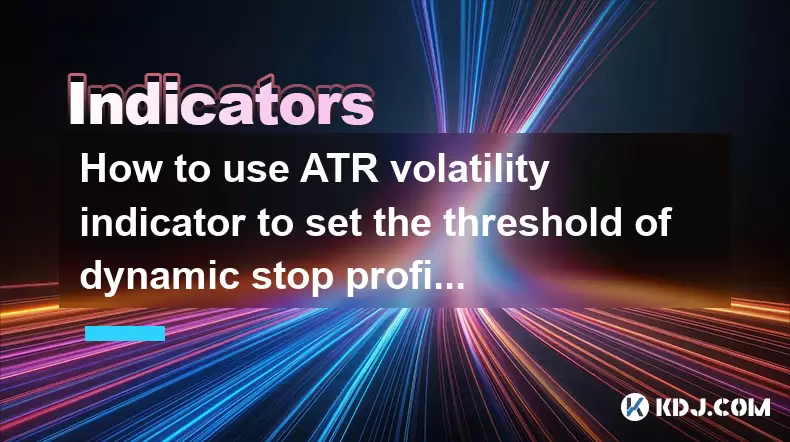-
 Bitcoin
Bitcoin $119900
0.91% -
 Ethereum
Ethereum $4576
8.55% -
 XRP
XRP $3.264
4.05% -
 Tether USDt
Tether USDt $0.9998
-0.05% -
 BNB
BNB $834.7
4.17% -
 Solana
Solana $191.8
9.96% -
 USDC
USDC $0.9998
-0.02% -
 Dogecoin
Dogecoin $0.2363
6.08% -
 TRON
TRON $0.3525
2.56% -
 Cardano
Cardano $0.8419
9.12% -
 Chainlink
Chainlink $23.19
9.97% -
 Hyperliquid
Hyperliquid $44.97
4.53% -
 Stellar
Stellar $0.4489
4.20% -
 Sui
Sui $3.876
6.19% -
 Bitcoin Cash
Bitcoin Cash $618.1
7.14% -
 Hedera
Hedera $0.2617
6.55% -
 Ethena USDe
Ethena USDe $1.000
-0.03% -
 Avalanche
Avalanche $24.61
7.96% -
 Litecoin
Litecoin $131.7
9.52% -
 Toncoin
Toncoin $3.502
3.62% -
 UNUS SED LEO
UNUS SED LEO $9.093
1.32% -
 Shiba Inu
Shiba Inu $0.00001358
5.37% -
 Uniswap
Uniswap $11.50
5.05% -
 Polkadot
Polkadot $4.150
7.77% -
 Dai
Dai $0.9997
-0.05% -
 Cronos
Cronos $0.1650
-0.75% -
 Ethena
Ethena $0.7981
2.06% -
 Pepe
Pepe $0.00001216
8.64% -
 Bitget Token
Bitget Token $4.467
1.74% -
 Aave
Aave $319.2
9.18%
How to use ATR volatility indicator to set the threshold of dynamic stop profit and stop loss?
ATR helps traders set dynamic stop loss and profit thresholds by adapting to market volatility, maximizing profits and minimizing losses in crypto trading.
Jun 03, 2025 at 10:14 pm

The Average True Range (ATR) volatility indicator is a widely used tool in the cryptocurrency trading community to gauge market volatility. ATR helps traders set dynamic stop profit and stop loss thresholds by adapting to the changing market conditions. This article will delve into how traders can effectively use ATR to manage their trades, ensuring they maximize profits and minimize losses in the volatile crypto market.
Understanding ATR and Its Calculation
The Average True Range (ATR) is a technical analysis indicator that measures market volatility by decomposing the full range of a candle. It was developed by J. Welles Wilder and is primarily used to set stop-loss orders or to determine the appropriate position size. The ATR is calculated as follows:
True Range (TR): The greatest of the following:
- Current high minus the current low
- Absolute value of the current high minus the previous close
- Absolute value of the current low minus the previous close
ATR: A moving average, typically over 14 periods, of the True Range values.
Understanding how ATR is calculated is crucial because it forms the basis for setting dynamic thresholds for stop profit and stop loss.
Setting Dynamic Stop Loss with ATR
Using ATR to set a dynamic stop loss involves multiplying the ATR value by a predetermined factor. This method allows the stop loss to adjust according to the market's volatility. Here's how to do it:
- Calculate the ATR: Use the current ATR value for the asset you are trading.
- Choose a Multiplier: A common multiplier is 2, but this can be adjusted based on your risk tolerance.
- Set the Stop Loss: Subtract the product of the ATR and the multiplier from the entry price.
For example, if you enter a trade at $1000 and the ATR is $50, using a multiplier of 2, your stop loss would be set at:
[ \text{Stop Loss} = 1000 - (50 \times 2) = 900 ]
This method ensures that your stop loss adjusts to the market's volatility, reducing the likelihood of being stopped out prematurely during normal market fluctuations.
Setting Dynamic Stop Profit with ATR
Similarly, ATR can be used to set dynamic stop profit levels. The goal is to lock in profits as the market moves in your favor while allowing room for the price to fluctuate. Here's how to set a dynamic stop profit:
- Calculate the ATR: Use the same ATR value as for the stop loss.
- Choose a Multiplier: This can be different from the stop loss multiplier, often set lower to capture profits more quickly.
- Set the Stop Profit: Add the product of the ATR and the multiplier to the entry price or the current price as the trade progresses.
For instance, if you entered a trade at $1000 and the ATR is $50, using a multiplier of 1.5, your initial stop profit could be set at:
[ \text{Stop Profit} = 1000 + (50 \times 1.5) = 1075 ]
As the trade moves in your favor, you can trail the stop profit by continuously updating it based on the new price and the current ATR value.
Adjusting ATR Settings for Different Cryptocurrencies
Different cryptocurrencies exhibit varying levels of volatility, which necessitates adjusting the ATR settings accordingly. For highly volatile assets like Bitcoin, a larger multiplier might be necessary to account for larger price swings. Conversely, for less volatile assets, a smaller multiplier could be more appropriate.
- High Volatility Assets: Use a higher multiplier for stop loss and stop profit to accommodate larger price movements.
- Low Volatility Assets: Use a lower multiplier to set tighter stop levels, ensuring profits are captured more quickly.
Understanding the specific volatility characteristics of each cryptocurrency you trade is essential for optimizing your ATR-based stop levels.
Implementing ATR in Trading Platforms
Most trading platforms, including those dedicated to cryptocurrencies, offer built-in ATR indicators. Here's how to implement ATR for setting dynamic stop levels in a typical trading platform:
Add ATR to Your Chart: Navigate to the indicators section and select ATR. Set the period to your preferred value, typically 14.
Calculate Stop Loss and Stop Profit: Use the ATR value displayed on your chart to manually calculate your stop levels based on the multipliers you've chosen.
Set Orders: Enter your stop loss and stop profit orders into the platform. Some platforms allow for automated trailing stops based on ATR, which can be set up to adjust dynamically as the trade progresses.
Monitor and Adjust: Regularly monitor the ATR value and adjust your stop levels accordingly, especially if there's a significant change in market volatility.
Practical Example of Using ATR in a Trade
Let's walk through a practical example of using ATR to manage a trade in Bitcoin (BTC).
- Entry Price: You enter a long position at $30,000.
- ATR Value: The current 14-period ATR for BTC is $1,000.
- Stop Loss Multiplier: You decide on a multiplier of 2.
- Stop Profit Multiplier: You choose a multiplier of 1.5.
Calculating the stop levels:
- Stop Loss: ( 30,000 - (1,000 \times 2) = 28,000 )
- Stop Profit: ( 30,000 + (1,000 \times 1.5) = 31,500 )
As the trade progresses and the price of BTC moves to $32,000, you can update your stop profit:
- New ATR Value: Assume it's now $1,200.
- Updated Stop Profit: ( 32,000 + (1,200 \times 1.5) = 33,800 )
This approach ensures that your stop levels adapt to the current market conditions, helping you manage risk and lock in profits effectively.
FAQs
Q: Can ATR be used for all types of cryptocurrency trades?
A: Yes, ATR can be used for both long and short positions in cryptocurrency trading. The key is to adjust the calculation based on whether you are going long or short. For short trades, you would add the ATR multiplied by the factor to the entry price for the stop loss and subtract it for the stop profit.
Q: How often should I update my ATR-based stop levels?
A: It's advisable to update your stop levels at least daily or whenever there's a significant change in market volatility. Some traders prefer to update their stops intraday, especially in highly volatile markets.
Q: Is there a risk of being stopped out too early with ATR-based stops?
A: Yes, there is a risk, especially if the ATR multiplier is set too low. Adjusting the multiplier based on the asset's volatility and your risk tolerance can help mitigate this risk. It's also important to consider the overall market trend and not just rely on ATR alone.
Q: Can ATR be used in conjunction with other indicators?
A: Absolutely, ATR can be combined with other technical indicators like moving averages, RSI, or MACD to create a more robust trading strategy. Using ATR to set stop levels while using other indicators for entry and exit signals can enhance your trading performance.
Disclaimer:info@kdj.com
The information provided is not trading advice. kdj.com does not assume any responsibility for any investments made based on the information provided in this article. Cryptocurrencies are highly volatile and it is highly recommended that you invest with caution after thorough research!
If you believe that the content used on this website infringes your copyright, please contact us immediately (info@kdj.com) and we will delete it promptly.
- Unich's OTC Exchange: Surging with $1.2B Volume – What's the Hype?
- 2025-08-13 02:50:11
- MoonBull's Explosive Moves: Your Crypto Whitelist Ticket to Ride!
- 2025-08-13 02:30:11
- MAGACOIN Finance: Don't Miss the Presale Bonus!
- 2025-08-13 02:30:11
- Trump's Crypto Kingdom: $2.4 Billion and Counting
- 2025-08-13 02:50:11
- Solana, LSTs, and SEC Approval: A New Dawn for Crypto?
- 2025-08-13 02:55:12
- Bitcoin's Profit Surge: Unpacking the BTC Value Boom
- 2025-08-13 02:55:12
Related knowledge

What does it mean when the +DI and -DI cross frequently in the DMI indicator but the ADX is flattening?
Aug 11,2025 at 03:15am
Understanding the DMI Indicator ComponentsThe Directional Movement Index (DMI) is a technical analysis tool composed of three lines: the +DI (Positive...

What does it mean when the moving average, MACD, and RSI all send buy signals simultaneously?
Aug 11,2025 at 01:42pm
Understanding the Convergence of Technical IndicatorsWhen the moving average, MACD, and RSI all generate buy signals at the same time, traders interpr...

What does it mean when the price is trading above the SAR indicator but the red dots are densely packed?
Aug 09,2025 at 11:49pm
Understanding the SAR Indicator and Its Visual SignalsThe SAR (Parabolic Stop and Reverse) indicator is a technical analysis tool used primarily to de...

What does it mean when the candlestick chart forms a "Morning Star" but trading volume is sluggish?
Aug 12,2025 at 06:28pm
Understanding the Morning Star Candlestick PatternThe Morning Star is a three-candle bullish reversal pattern commonly observed in cryptocurrency pric...

What does it mean when the RSI indicator moves sideways for an extended period between 40 and 60?
Aug 10,2025 at 08:08am
Understanding the RSI Indicator in Cryptocurrency TradingThe Relative Strength Index (RSI) is a momentum oscillator widely used in cryptocurrency trad...

What does it mean when the MACD histogram continues to shorten but the price reaches a new high?
Aug 09,2025 at 09:29pm
Understanding the MACD Histogram and Its ComponentsThe MACD (Moving Average Convergence Divergence) indicator is a widely used technical analysis tool...

What does it mean when the +DI and -DI cross frequently in the DMI indicator but the ADX is flattening?
Aug 11,2025 at 03:15am
Understanding the DMI Indicator ComponentsThe Directional Movement Index (DMI) is a technical analysis tool composed of three lines: the +DI (Positive...

What does it mean when the moving average, MACD, and RSI all send buy signals simultaneously?
Aug 11,2025 at 01:42pm
Understanding the Convergence of Technical IndicatorsWhen the moving average, MACD, and RSI all generate buy signals at the same time, traders interpr...

What does it mean when the price is trading above the SAR indicator but the red dots are densely packed?
Aug 09,2025 at 11:49pm
Understanding the SAR Indicator and Its Visual SignalsThe SAR (Parabolic Stop and Reverse) indicator is a technical analysis tool used primarily to de...

What does it mean when the candlestick chart forms a "Morning Star" but trading volume is sluggish?
Aug 12,2025 at 06:28pm
Understanding the Morning Star Candlestick PatternThe Morning Star is a three-candle bullish reversal pattern commonly observed in cryptocurrency pric...

What does it mean when the RSI indicator moves sideways for an extended period between 40 and 60?
Aug 10,2025 at 08:08am
Understanding the RSI Indicator in Cryptocurrency TradingThe Relative Strength Index (RSI) is a momentum oscillator widely used in cryptocurrency trad...

What does it mean when the MACD histogram continues to shorten but the price reaches a new high?
Aug 09,2025 at 09:29pm
Understanding the MACD Histogram and Its ComponentsThe MACD (Moving Average Convergence Divergence) indicator is a widely used technical analysis tool...
See all articles

























































































